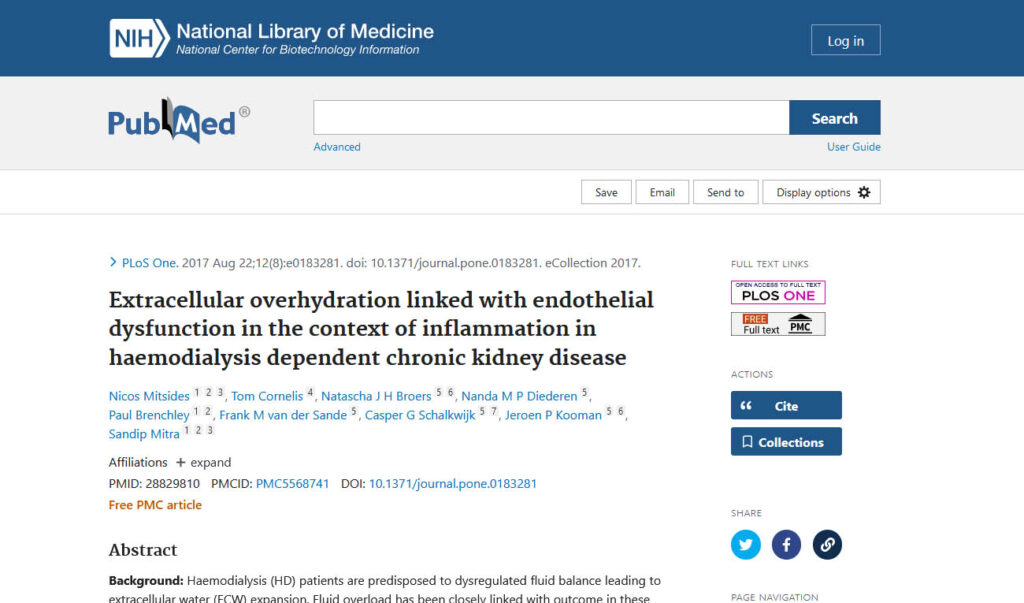Abstract
Background: Haemodialysis (HD) patients are predisposed to dysregulated fluid balance leading to extracellular water (ECW) expansion. Fluid overload has been closely linked with outcome in these patients. This has mainly been attributed to cardiac volume overload, but the relation between abnormalities in fluid status with micro- and macrovascular dysfunction has not been studied in detail. We studied the interaction of macro- and microvascular factors in states of normal and over- hydration in HD-dependent CKD.
Methods: Fluid compartments [total body water (TBW) and ECW] and overhydration index (OH) were measured with Multifrequency bio-impedance (BCM). Overhydration was defined as OH/ECW>7%. Overhydration was also assessed using the ECW/TBW ratio. Macrocirculation was assessed by pulse-wave velocity (PWV) and mean arterial pressure (MAP) measurements while microcirculation through sublingual capillaroscopy assessment of the Perfused Boundary Region of the endothelial glycocalyx (PBR 5-25mcg). A panel of pro-inflammatory and vascular serum biomarkers and growth factors was analysed.
Results: Of 72 HD participants, 30 were in normohydration (N) range and 42 overhydrated according to the OH/ECW ratio. Average ECW/TBW was 0.48±0.03. Overhydrated patients had higher MAP (122.9±22.5 v 111.7±22.2mmHg, p = 0.04) and comorbidities (median Davies score 1.5 v 1.0, p = 0.03). PWV (p = 0.25) and PBR 5-25mcg (p = 0.97) did not differ between the 2 groups. However, Vascular Adhesion Molecule (VCAM)-1, Interleukin-6 and Thrombomodulin, and reduced Leptin were observed in the overhydrated group. Elevation in VCAM-1 levels (OR 1.03; 95% CI 1.01-1.06; p = 0.02) showed a strong independent association with OH/ECW>7% in an adjusted logistic regression analysis and exhibited a strong linear relationship with ECW/TBW (Bata = 0.210, p = 0.03) in an also adjusted model.
Conclusion: Extracellular fluid overload is significantly linked to microinflammation and markers of endothelial dysfunction. The study provides novel insight in the cardiovascular risk profile associated with overhydration in uraemia.


